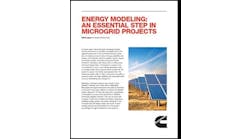As Extreme Heat Overwhelms the Northwest, Congressional Briefing Looks to Microgrids
With a heat dome bringing record setting high temperatures to the Pacific Northwest, US Rep. Jimmy Panetta, D-Calif., said microgrids are one of the solutions for dealing with extreme weather, during a Congressional briefing.
“It’s a cleaner alternative to the default backup generators that many people have right now,” Panetta said June 25 during the briefing on microgrids hosted by the nonpartisan International Conservation Caucus Foundation (ICCF).
Tax credits for microgrids
Microgrids give communities and people independence and the ability to take control of their power reliability, according to Panetta, sponsor of a bill that would provide a 30% tax credit for microgrids.
Panetta’s district on California’s central coast is seeing growing interest in microgrid projects, partly in response to public safety power shutoffs, which are planned power outages that aim to reduce the chance transmission lines will spark wildfires.
After having its power shut off, the town of Gonzales, California, is planning a 35-MW microgrid, Panetta said.
“They said, ‘No more. We’re going to come up with our own microgrid,’ ” Panetta said. “And you’re seeing not just towns but also individuals and homes and remote areas in my district — they’re all pivoting to microgrids.”
Panetta said his tax credit bill could help make microgrids more affordable. Municipalities and nonprofits that don’t have tax liabilities could take the credit as a direct payment, he said.
There is significant bipartisan support for microgrids, said Christine Harbin, ICCF program director, noting the microgrid discussion was held a day after a bipartisan group of senators reached an agreement with the White House on a roughly $1.2 trillion infrastructure plan.
The framework includes $47 billion to make infrastructure more resilient to the effects of climate change plus $73 billion for power infrastructure.
The plan calls for building transmission lines and upgrading the power grid to be more energy efficient and resilient in extreme weather, President Joe Biden said after the plan was unveiled. Even with the agreement, the outlook for the plan is uncertain, according to Harbin.
PXiSE sees multiple microgrid benefits
During a panel discussion about microgrids during the Congressional briefing, Patrick Lee, CEO of PXiSE and a founding member of Think Microgrid, said microgrids have three key applications: resiliency, energy independence and support for other microgrids.
“I think that energy sharing across microgrids is really what’s producing the lower costs, getting higher return on our infrastructure,” Lee said.
PXiSE, a grid management company, is working with ESS Tech, a long-duration storage company, on a microgrid project being developed by a utility in Southern California, Aram Zamgochian, ESS director of strategic partnerships, said during the panel discussion.
The project will combine long-duration batteries with photovoltaic solar and PXiSE’s control system for multiday continuity of services to first responders and critical customer loads like hospitals, cooling centers and education facilities, according to Zamgochian.
“I think most importantly, though, it’s not just about public safety,” Zamgochian said. “The project makes good economic sense because for six months out of the year, when we’re not in wildfire season and not dealing with public safety power shutoffs, the battery is going to be dispatched, along with the PXiSE controls, for multiple applications around the year, therefore increasing the bankability of this important project.”
Looking beyond resiliency
Resiliency concerns may be driving interest in microgrid projects, but people should pay more attention to other benefits microgrids offer, according to Lee.
Storms occur rarely so it’s important to consider how microgrids can lower customer costs and also support other microgrids, reducing the need to overbuild infrastructure, Lee said.
“Not everyone has to be totally independent, otherwise it wouldn’t be cost effective if everyone’s islanded,” Lee said. “There’s no need for the grid right then, but then a lot of the resources are locked up inside the microgrid.”
Electric vehicles will have microgrid role
Looking ahead, electric vehicles and their charging infrastructure could be a key component of microgrid projects, according to Katie Jereza, vice president of corporate affairs at the Electric Power Research Institute, a utility-funded research group.
Mobile microgrids that can quickly be brought to areas facing emergencies is another area likely to see advances, Jereza said.
Track news about Congressional action on microgrids. Subscribe to the free Microgrid Knowledge Newsletter.







